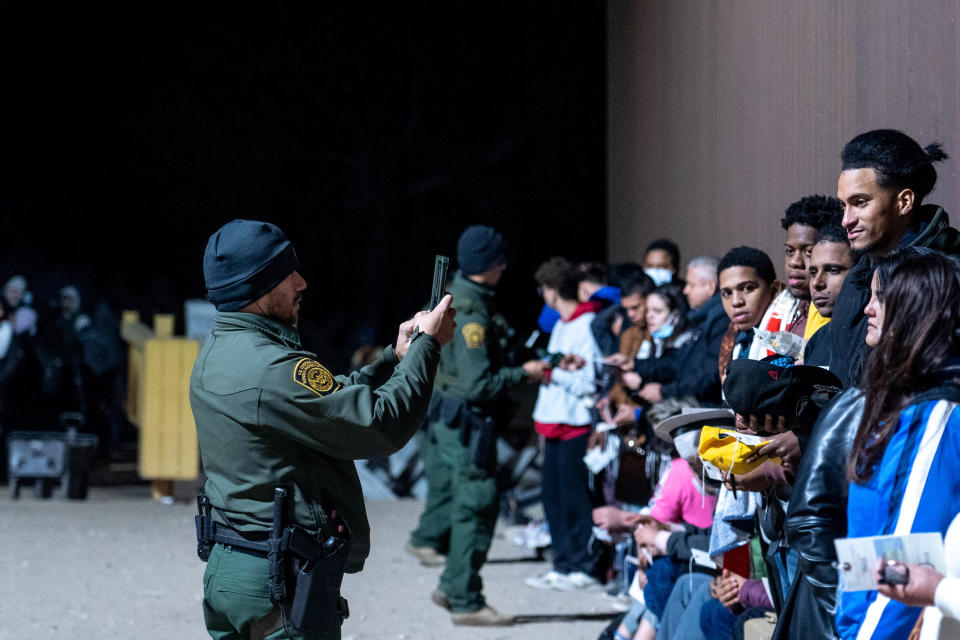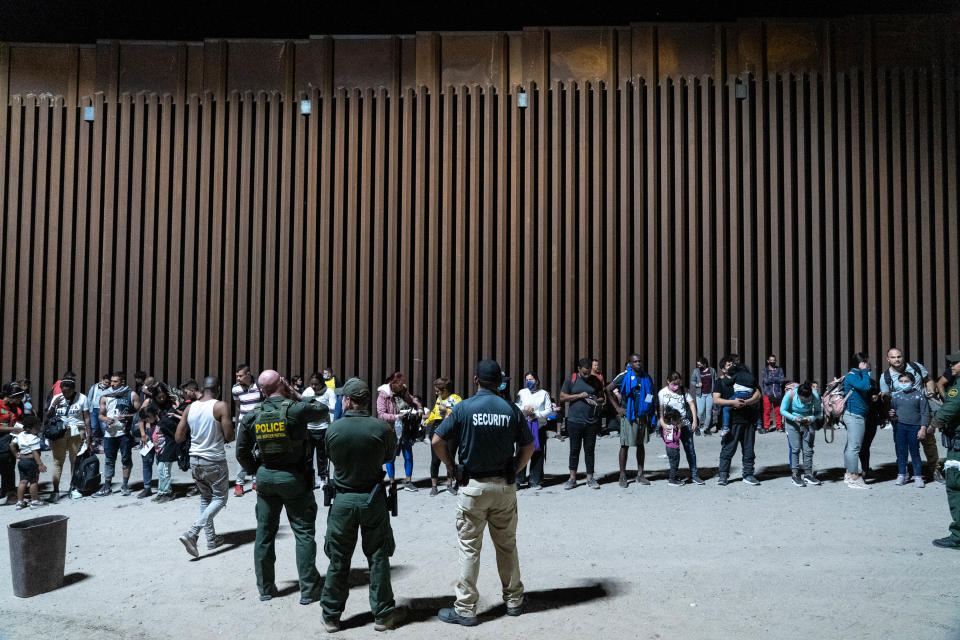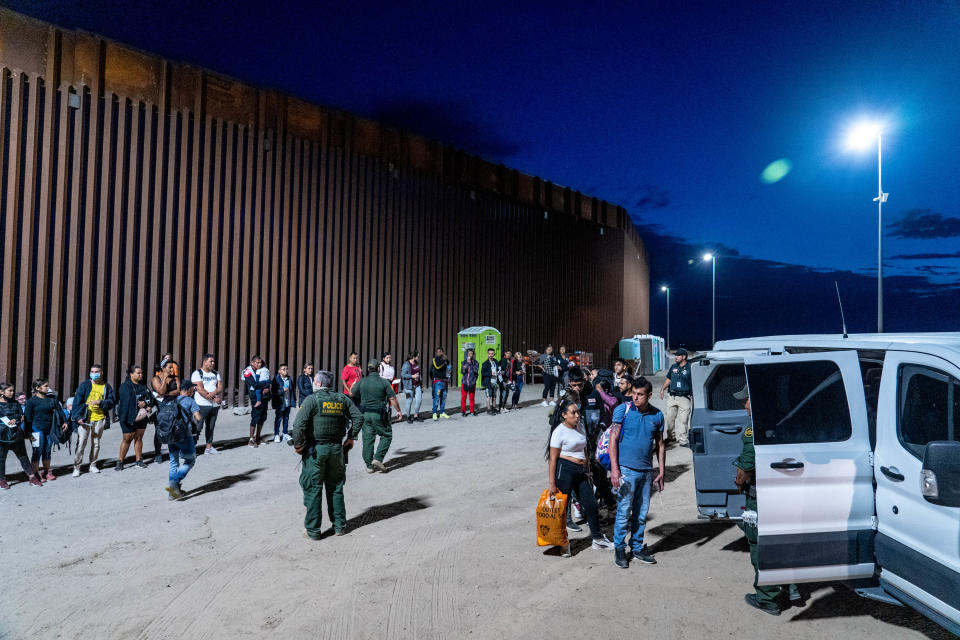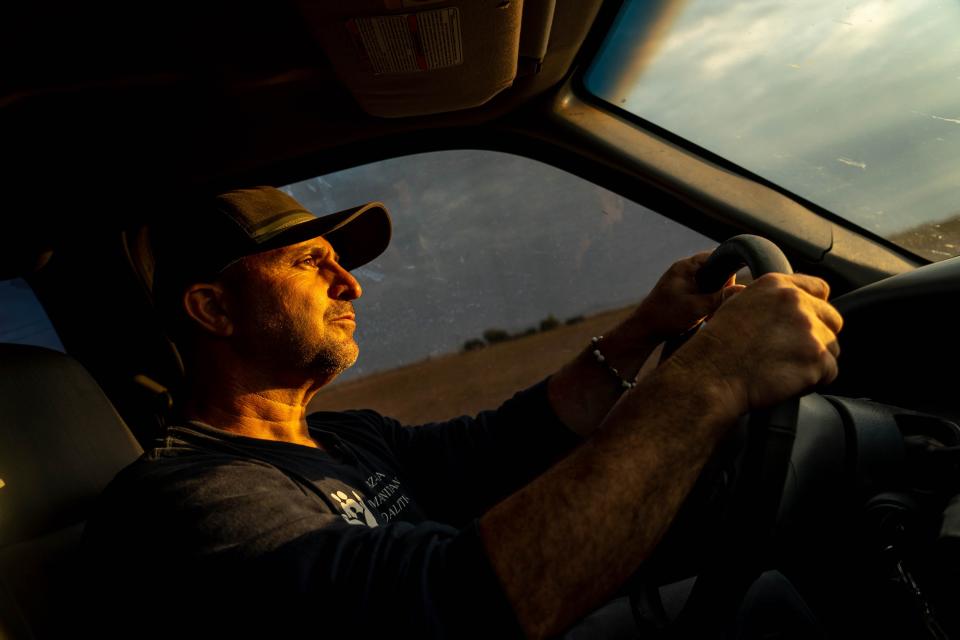Border Patrol released migrant on terrorist watchlist, watchdog says
The U.S. Border Patrol released a migrant who was on a terrorist watchlist after apprehending them and their family in Yuma in April 2022, according to a government watchdog.
The incident happened because of U.S. Customs and Border Protection’s “ineffective practices and processes” that led to multiple mistakes, according to a June report from the Department of Homeland Security's Office of Inspector General. The report documented numerous missteps that led to the release of the migrant.
The migrant, whose gender or nationality were not disclosed in the report, was encountered and screened for national security threats by Border Patrol agents on April 17, 2022. The FBI’s Terrorist Screening Center flagged the migrant as an inconclusive terrorist watchlist match, which means the center needed more identifying information such as fingerprints or copies of travel documents to draw a positive match.
Border Patrol agents released the migrant two days later, per the report.
On April 21, four days after the migrant was released, the migrant and their family checked in for a flight to Tampa, Florida, at the Palm Springs International Airport in Palm Springs, California. The FBI’s terrorist center got additional information about the migrant during the pre-flight screening and was able to make a positive match to the terrorist watchlist, according to the report.
U.S. Immigration and Customs Enforcement’s Enforcement and Removal Operations arrested the migrant in Florida on May 6, over two weeks after their release from custody. The migrant had an ankle monitor on, allowing for officials to continuously monitor their location, according to a DHS official.
Border Patrol apprehensions of people on the terrorist watchlist represent an extremely small portion of the total number of migrants agents encounter every year, according to CBP data.
The watchlist encounters are 0.0089% of all Border Patrol encounters, per CBP data.

The OIG finding is only the latest in a pair of government watchdog reports that scrutinize CBP’s operations.
“If CBP’s ineffective practices for resolving inconclusive Terrorist Watchlist matches continue, the component risks releasing individuals into the United States who potentially threaten national security and public safety,” the report said.
A DHS official said the report’s title and framing were misleading in an emailed statement Monday. CBP had no notice that the migrant was a confirmed match with the FBI’s Terrorist Screening Dataset at the time of their release, according to the official.
The screening dataset, also known as the terrorist watchlist, tracks people suspected to be involved with terrorism or related activities.
“This OIG report sensationalizes and mischaracterizes a complex case, in which CBP and ICE personnel took appropriate steps to ensure there was no threat to the public,” a DHS spokesperson said in a written statement.
"Noncitizens encountered by CBP are thoroughly screened and vetted, and any individual determined to pose a threat to national security or public safety is detained.”
Rep. Paul Gosar, R-Ariz., who represents parts of Yuma County, described the incident as a “disgrace.”
What led to the migrant’s release and subsequent arrest?
After the Border Patrol detains migrants, agents send their biographical and biometric information to the FBI’s Terrorist Screening Center. The center runs the information through the terrorist watchlist and determines if anyone is a match.
If an inconclusive match is found, CBP’s National Targeting Center will coordinate with Border Patrol to get more information about the migrant to determine if they’re a positive match.
In the case of the released migrant in Yuma, the FBI’s center asked CBP’s center to arrange an interview with the migrant in order to gather more information to make a match. CBP tried to send an interview request to the Tactical Terrorism Response Team, which conducts interviews to identify national security threats.
The interview request, however, was sent to the wrong email distribution list for the tactical team, the report found.
An official with CBP’s center explained to investigators that there are many Border Patrol distribution lists and that officers with the targeting center may not have up-to-date emails for each one.
As a result, the tactical team didn’t get the request and didn’t interview the migrant, per the report.
CBP’s center also obtained information about the migrant from a joint border intelligence group but failed to forward the information to the FBI’s center.

CBP’s center then reached out to the Yuma centralized processing center for help in determining if the migrant was a positive match to the watchlist.
The Yuma center did not respond to their email.
A Yuma processing center agent told investigators that agents try to respond to CBP’s targeting center emails as quickly as possible but they were busy processing an increased flow of migrants. Yuma center agents added that the center was over capacity, which created pressure to quickly process migrants and decreased the time available to review each file.
Finally, the Yuma center processed and transferred the migrant for release before CBP’s center could finish coordinating with the FBI’s center to determine a positive match. CBP’s center was still working to gather information for the FBI when the migrant was released, per the report.
'Recipe for death': Record temps, policies contribute to recent string of migrant deaths
During the migrant’s arrest, ICE faced challenges transferring documentation while planning the arrest and obtaining GPS data while conducting the arrest, according to the report.
Officials did not release details about the migrant’s gender or nationality in the report. However, details of the case match those documented in a congressional hearing in July 2022 when lawmakers grilled the nominee for administrator of the Transportation Security Administration.
Details of the hearing were linked and referenced in the report. The hearing focused on a Colombian national who was confirmed to be on the terrorist watchlist with TSA’s help after being apprehended in Yuma.
CBS News first reported the connection.

Watchdog finds overcrowding, longer detention times in AZ facilities
A previous Office of Inspector General report found that Border Patrol’s handling of migrants’ property was inconsistent across the Tucson and Yuma sectors. Some migrants’ property did not travel with them when they were released or transferred from Border Patrol custody, the June report found.
When migrants are taken into custody, Border Patrol gives them the choice to either discard their larger belongings, such as backpacks or luggage, or place it in long-term storage where they can reclaim it later.
At the Yuma processing center, migrants’ larger property generally did not go with them when they left custody, per CBP operating standards. Border Patrol officials said that was not possible because the buses cannot fit both the migrants and their larger property, the report stated.
Additionally, the Yuma center only had space in their storage room to store small personal items, such as cell phones, documents and money. The Tucson center had space to store both large and small belongings.
“The findings that CBP is mishandling and mistreating sensitive belongings and documents are consistent with reports from migrants and local stakeholders that have been alerting us to this issue for months now. It’s unacceptable,” Rep. Raúl Grijalva, D-Ariz, said in a written statement.
“We need additional action from the Biden administration to ensure uniform practices and humane treatment of migrants and their belongings.”
Advocates raised concerns about Border Patrol agents forcing migrants to discard their belongings before being taken into custody near Yuma in the summer of 2022. Advocates found passports, birth certificates, Bibles, pictures and even a family member’s ashes abandoned on the ground.
'That's all we have': Migrants forced to discard belongings at border

Dumpsters once were filled to the brim with discarded backpacks near a frequent crossing point next to the Cocopah Reservation. Border Patrol agents subsequently shifted their practices and allowed migrants to take their bags with them to the station for processing.
The American Civil Liberties Union of Arizona also raised concerns about Border Patrol agents in Yuma confiscating Sikh asylum-seekers’ turbans, as was first reported by the nonprofit newsroom Arizona Luminaria.
One migrant reported to OIG investigators that his turban had been confiscated and discarded at the Yuma processing center, according to the report.
For subscribers: Asylum-seeking couple finds hope after 'psychological torture' in final days of Title 42
All five Arizona Border Patrol facilities that were inspected in the report experienced prolonged detention while two of them were over capacity during the investigators’ unannounced inspections in July 2022, the report found.
The report found that 43% of migrants were held in custody longer than the 72 hours specified in the National Standards on Transport, Escort, Detention, and Search.
In the Yuma Sector, Border Patrol held 44% of migrants for longer than 72 hours. In the Tucson Sector, agents held 41% for longer than 72 hours, per the report.
The maximum time in custody across the five facilities was 18 days, according to the report.
Additionally, the Yuma and Tucson Border Patrol processing centers were over maximum capacity at the time of the visit.
The Yuma Centralized Processing Center was at 193% capacity. Three of the seven holding cells in the center were near or over 200% capacity.
The Tucson Coordination Center was at 143% capacity. Four of the 12 holding cells in the Tucson center were over capacity with one at 139% capacity and three over 200% capacity, the report found.
Have a news tip or story idea about the border and its communities? Contact the reporter at josecastaneda@arizonarepublic.com or connect with him on Twitter @joseicastaneda.
This article originally appeared on Arizona Republic: AZ Border Patrol released migrant on terrorist watchlist, report finds

